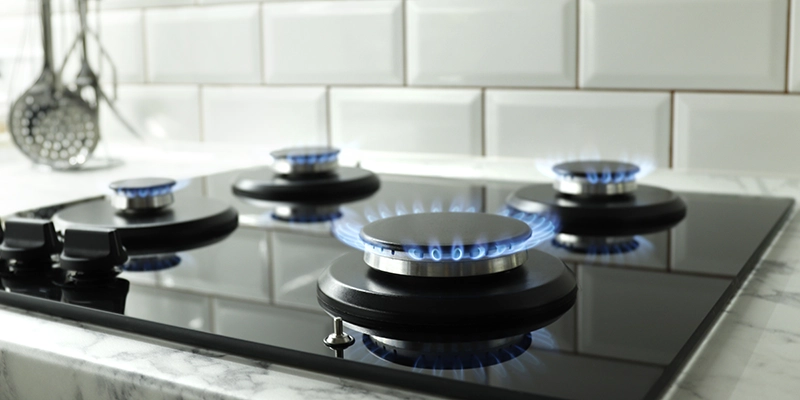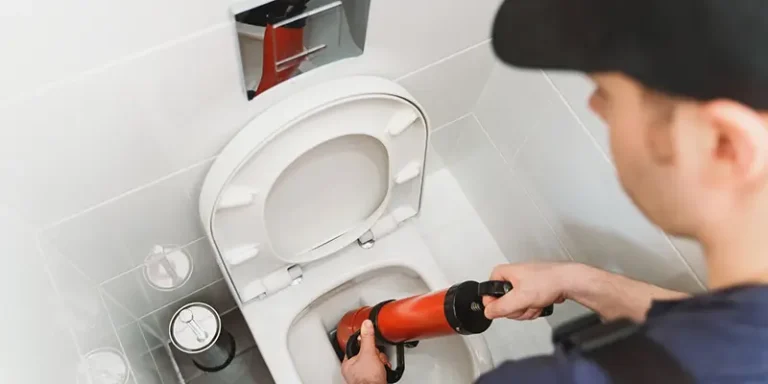Are you having trouble disconnecting a gas stove? Here’s a short guide on how to do it the right way.
Disconnecting gas ranges might be complicated, but it is still a doable job. Whether you want to disconnect your gas stove because you wish to give it a thorough cleaning, you want to replace a damaged hose connector, or change the gas appliance. You can do it all by yourself without throwing money.
Properly disconnecting a gas stove
Before you disconnect a gas stove, it would help to check for leaks first and turn off the gas flow to that specific supply line. Moreover, if you follow the proper steps, it won’t require much time.
But you would have to take some safety precautions to conveniently and immediately do the job by yourself without the need to call a professional. So, let’s explore what those steps are.
Turn off the gas valve
To get the gas disconnected simply, reach behind the stove, and check the gas shutoff valve on the gas lines. Generally, there’s a shutoff valve before the stove and a flexible gas line. So, if you find it turn the lever to cut the gas supply to the kitchen completely.
If you are unable to find the gas shutoff valve, building codes require them to be located within 6 feet of the gas appliances. So, if you smell gas, you won’t have to spend time finding one. Just look for the pipes connecting the gas outlet with the stove.
For a countertop stove, you’ll find the valve inside the cabinet below the countertop.
Next, remove the connection hose and move it out of the way. Once you’ve turned the gas off, make sure that there are no signs of a potential gas leak.
Make a solution with one part dish soap and two parts water. You can check for leakage by spraying this soapy water on the gas line connection.
If bubbles start forming, there is confirmed leakage, so turn the valve more tightly. You may have to use a pipe wrench to secure the valve tightly. In order not to damage the pipe connected to the valve it is recommended to always use a backup wrench behind the shutoff valve facing the opposite direction.
However, if no bubbles are formed, and there is still a lingering gas smell from the connection hose, it doesn’t mean that there is a substantial leakage.
You can open the windows and doors of the kitchen to overcome the smell of gas and let the fresh air inside.
Cap the gas pipe
Until you haven’t replaced your gas stove, a good step is to cap the gas pipe with a threaded cap.
Capping will prevent a major gas leak inside the house in case someone accidentally hits the gas shutoff valve during the working process.
In addition, if you are worried about a potential leak, you can turn the gas main connection off. This will put you at ease while replacing your old stove or installing a new one.
Remove the gas stove
While removing an old stove, make sure to do it carefully without damaging the floor. You don’t want to replace the flooring anytime soon because it will be an additional cost.
Have a large piece of flat wood prepared and place it in front of the stove till you can grab and gently jostle it a little so the stove can clear space away from the building wall and you can move it freely.
There might be a possibility that it cannot tip because of the anti-slip safety gadget connecting it to the wall. But continue sliding your stove till the device’s edge gets separated from the anti-slip frame.
A conventional gas stove may have an outlet nearby for its electricity mechanism, as the majority of them are designed with electronic starters to lower the need for pilot lights. After this, locate the wire and unplug it.
If the stove is installed in a cabinet, clear the cabinet before entirely removing the gas stove.
Use an appliance dolly to safely remove the gas stove as it will save the wooden planks of your flooring and definitely your back.
Reconnect the gas line
After you’ve all the above steps and are ready to install a new stove, there are a few things to pay heed to. Use a pipe thread sealant (pipe dope) which is approved for natural gas lines.
You can easily find a pipe thread sealant in your local hardware store. This pipe dope will create a seal between the valve and the new pipe, creating a better connection than the previous one.
After installing the new connection, make sure to check for leaks in the gas line with soapy water and keep the gas line turned off until you are not assured if there is a leakage or not.
Frequently Asked Questions
- How long does a natural gas stove last?
Gas stoves can last up to 15 years, while electric stoves only last an average of 13 years. But if you want to keep them in the best order, make sure to wash your electric stove regularly so it can last longer.
- Does gas require electricity to function?
Rather than using electricity, a conventional gas stove requires producing electricity for its start mechanism. They do this with the help of a thermopile integrated into the pilot light.
Thermopile produces electricity needed to shut off the isolation valve or open the valve.
- When to call a professional plumber or gas company?
In a worst-case scenario, when you think you have a gas leak or there is a danger of explosion, call your gas company or a plumber who is certified to disconnect gas stoves. If you’re looking for plumbers in Las Vegas, we’re a phone call away.
They will do a more secure job than an amateur one.
- How can you locate the closest shut-off valve?
Search the shutoff valve by simply tracking down the air path to the basement. If you are still unable to find the breaker, just look above or below the gas meter. You’ll find most valves there and can easily turn off the gas supply to the entire house.
Don’t let your home fall into disrepair! Check out our list of home repairs related articles below for more information on how to keep your home in top condition.








